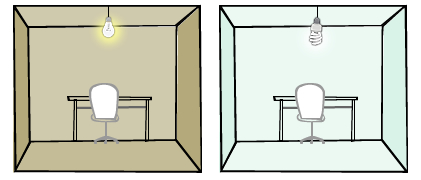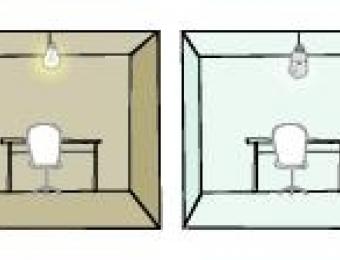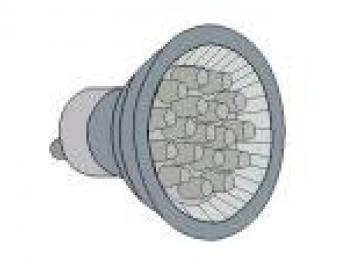
A 'lumen' is a unit used to measure the amount of light perceived by the human eye. For the sake of reference, a 100W incandescent globe typically produces around 1750 lumens (lm).
'Luminous efficacy' is the manner in which you can measure the efficiency of a light, as lumens per watt (lm/W). This means you can identify the amount of light produced by a bulb per watt of electricity consumed. This measure is particularly useful when planning the number and type of lights you can use in a particular space under the new regulations (which restrict lighting to 5W per square metre).
Luminous efficacy of different types of globes
Using this measure, incandescent and halogen lights (which are another form of incandescents anyway) are the least efficient. Incandescent light bulbs produce the least amount of lumens per watt, averaging only 10 to 17lm/W. Halogen lights provide 12 to 15lm/W. Compact fluorescent lamps (CFLs) emit 40 to 70lm/W, and high-pressure sodium produces 50 to 140lm/W.
Commercially available LEDs presently produce fewer lumens per watt than CFLs, but they last 15 times longer and burn cooler so are easily the most efficient. Likewise, because LED technology is being developed for domestic lighting applications, there are constant, dramatic improvements in the luminous efficacy of LED globes, and they will no doubt lead in this field too in the very near future.
Lux
Lumens are a measure of how much light is emitted per watt of power consumed, but 1000 lumens spread over one square metre looks very different to 1000 lumens spread over ten square metres. Lux is a direct measure of how many lumens there are for each square metre.
For example, 1000 lumens in one square metre is equivalent to a luminance of 1000 lux. The same 1000 lumens spread across an area of ten square metres results in a much duller illumination, and is equivalent to a luminance of 100 lux.
As you can imagine, this sort of measurement is particularly important when you consider the strict new Building Code of Australia regulations governing the amount of wattage allowed per square metre. To squeeze the most out of the allowed wattage, it's important not just to consider how many watts your lights are using, but also how much light they're producing per watt, and where it's being delivered. This is especially important if you're choosing LED lights, some of which emit a very narrow beam.





